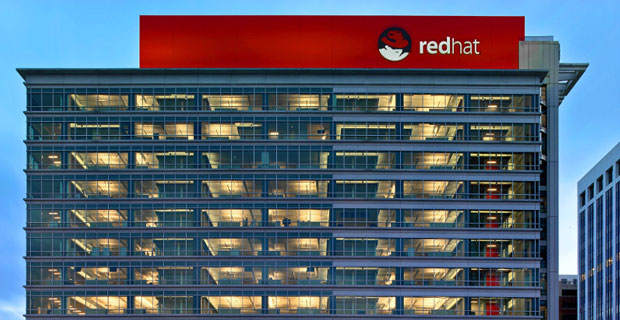Cisco and Google Partner on New Hybrid Cloud Solution

"Get Join for Cloud Computing Training in Online "

 ownCloud is a self-hosted file sync and share server. It provides access to your data through a web interface, sync clients or WebDAV while providing a platform to view, sync and share across devices easily — all under your control. ownCloud’s open architecture is extensible via a simple but powerful API for applications and plugins and it works with any storage.
ownCloud is a self-hosted file sync and share server. It provides access to your data through a web interface, sync clients or WebDAV while providing a platform to view, sync and share across devices easily — all under your control. ownCloud’s open architecture is extensible via a simple but powerful API for applications and plugins and it works with any storage.

| Model | Cores | Threads | Cache | Speed | RAM type | EIST | CPU TDP | Total TDP |
|---|---|---|---|---|---|---|---|---|
| Atom N450 | 1 | 2 | 512 KB | 1.66 GHz | DDR2 | yes | 5.5 Watts | 7 Watts |
| Atom N455 | 1 | 2 | 512 KB | 1.66 GHz | DDR2 / DDR3 | yes | 5.5 Watts | 7 Watts |
| Atom N470 | 1 | 2 | 512 KB | 1.83 GHz | DDR2 | yes | 6.5 Watts | 8 Watts |
| Atom N475 | 1 | 2 | 512 KB | 1.83 GHz | DDR2 / DDR3 | yes | 6.5 Watts | 8 Watts |
| Atom N550 | 2 | 4 | 1 MB | 1.5 GHz | DDR3 | yes | 8.5 Watts | 10 Watts |
| Atom N570 | 2 | 4 | 1 MB | 1.66 GHz | DDR3 | yes | 8.5 Watts | 10 Watts |
| Atom D410 | 1 | 2 | 512 KB | 1.66 GHz | DDR2 | no | 10 Watts | 12 Watts |
| Atom D425 | 1 | 2 | 512 KB | 1.80 GHz | DDR2 / DDR3 | no | 10 Watts | 12 Watts |
| Atom D510 | 2 | 4 | 1 MB | 1.66 GHz | DDR2 | no | 13 Watts | 15 Watts |
| Atom D525 | 2 | 4 | 1 MB | 1.80 GHz | DDR2 / DDR3 | no | 13 Watts | 15 Watts |



| Level Of Expertise Required | Low | ||||||||||||||||||||||||||||||||||||||||||||||||||||||||||||||||||||||||||||||||||||||||||||||||||||||||||||||||||||||||||||||||||||||||||||||||||||||||||||||||||||||||||
| Desktop Environment | Cinnamon, MATE, XFCE, KDE | ||||||||||||||||||||||||||||||||||||||||||||||||||||||||||||||||||||||||||||||||||||||||||||||||||||||||||||||||||||||||||||||||||||||||||||||||||||||||||||||||||||||||||
| Purpose | General Desktop Operating System | ||||||||||||||||||||||||||||||||||||||||||||||||||||||||||||||||||||||||||||||||||||||||||||||||||||||||||||||||||||||||||||||||||||||||||||||||||||||||||||||||||||||||||
| Download Link | https://www.linuxmint.com/download.php | ||||||||||||||||||||||||||||||||||||||||||||||||||||||||||||||||||||||||||||||||||||||||||||||||||||||||||||||||||||||||||||||||||||||||||||||||||||||||||||||||||||||||||
| Based On | Ubuntu, DebianDebian
Debian is one of the oldest Linux distributions and is the base for many of the other distributions that exist including Ubuntu and Linux Mint.
It is a community distribution and only ships with free software and free drivers. The Debian repositories have thousands of applications and there are versions available for a large number of hardware devices.
It isn't the easiest to install and there are various steps you need to go through post installation to get all of your hardware working.
Ubuntu
Ubuntu is a modern desktop operating system designed for the masses and is meant to be every bit as easy to use as Windows or OSX.
With full hardware integration and a complete set of applications, most beginners see this as the first step onto the Linux ladder.
If you want to try something other than Windows and you are worried about Linux relying too hard on the command line try Ubuntu because you won't need the terminal window at all.
Easy to install and easy to use with great support.
Manjaro
Manjaro provides an easier method to install and use an Arch based distribution. Arch is a forward thinking rolling distribution which many expert users swear by.
Unfortunately, Arch is somewhat less forgiving on new users and a level of expertise and a willingness to learn and read is required to get up and running.
Manjaro bridges the gap by providing an operating system that intermediate users can use to get a taste of Arch without the hassle.
Fairly lightweight which means it will work well on older hardware and machines with low resources.
openSUSE
A great alternative to Ubuntu and other Debian based Linux distributions.
openSUSE provides a stable environment for home users with a decent set of applications and a decent level of support.
Installation can be a bit tricky for new or inexperienced computer users but once set up there is a decent set of documentation.
Not quite as straight forward as Mint or Ubuntu.
Fedora
Fedora is a community distribution based on Red Hat.
Designed to be cutting edge, Fedora always comes with up to date software and drivers and was one of the first distributions to introduce both Wayland and SystemD.
Straight forward to install and comes with a good range of software. Can be temperamental due to the fact that it is so cutting edge and not all packages are stable.
Zorin OS
Zorin is based on Ubuntu and has been designed to look and feel like other operating systems such as Windows 7 and OSX. (The user chooses the theme to make it look like one thing or another).
It has a complete set of desktop applications such as office suite, graphics application, audio player, video player etc.
Zorin also has a lot of visual effects.
Elementary
It is hard to believe that Elementary is so low in the rankings at the moment. Designed to be lightweight yet easy to install and use with the emphasis on a clean and elegant user interface.
It is based on Ubuntu and so provides access to a large repository of applications.
Deepin
Deepin heralds from China and is based on Debian. It has its own desktop environment based on QT5 and includes its own software manager, audio player, and other tools.
CentOS
CentOS is another community distribution based on Red Hat but unlike Fedora it is more mainstream and built for the same sort of audience as openSUSE.
It uses the same installer as Fedora and so it is straight forward to install and there is a decent selection of applications.
Antergos
Antergos like Manjaro aims to provide an operating system that anybody can use whilst also providing access to Arch Linux.
Not quite as polished as Manjaro but it offers the choice of multiple desktop environments and is fairly easy to use.
The way you choose the desktop environment is during the installation stage and through the installer, you can choose all manner of features such as the applications you wish to install such as LibreOffice.
Generally speaking a very good distribution but not so easy to dual boot.
Arch
As mentioned previously Arch is a distribution that intermediate and expert Linux users swear by. It provides up to date software and drivers but requires more maintenance than other distributions and it requires decent knowledge and a willingness to read the manual.
PCLinuxOS
It is unbelievable that this distribution is so low in the rankings. As easy to install and use as Ubuntu or Mint and has a great set of repositories and a good community.
This would be my true alternative to using Ubuntu or Mint. What is more is that it is a rolling distribution meaning that once it is installed you never need to upgrade as it is always up to date.
Solus
Solus is a fairly new distribution which focuses on providing quality over quantity. Whilst this makes a great distribution on the surface certain key applications aren't available.
As the distribution evolves it could become a major player but for now I would doubt the average person could use it as their only operating system
Linux Lite
Linux Lite is another Ubuntu based operating system designed to be lightweight. It is easy to install and comes with a full suite of applications.
It isn't an official Ubuntu spin off but it has been going for a number of years now and it is definitely worth checking out.
As it is based on Ubuntu it is easy to install and use.
Mageia
Mageia rose from the flames of the Mandriva project when it briefly ceased to exist.
A general purpose distribution similar to openSUSE and Fedora with a good range of software and a simple to use installer.
There are a few quirks but nothing insurmountable.
Ubuntu MATE
Before Ubuntu started using the Unity desktop it utilized the GNOME 2 desktop which was a popular desktop environment which was both lightweight and customizable.
The MATE desktop environment provides a desktop very similar to the old GNOME 2 desktop although it utilizes GNOME 3.
What you end up with is all the goodness of Ubuntu with a good performance and a highly customizable desktop environment.
LXLE
LXLE is basically Lubuntu on steroids. Lubuntu is a lightweight version of the Ubuntu distribution utilizing the LXDE desktop.
LXLE is a respin of Lubuntu with a more complete set of applications and tools included. The fact that LXLE is more popular than Lubuntu shows that the extras added do provide good value.
Easy to install and great for older computers and netbooks.
|